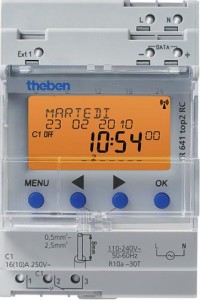
Introduction
In a time of crisis like the present one in which the energy savings turns out to be a top priority, with a view to more efficient lighting environments especially public ones such as roads, gardens, parks, monuments, signs, parking, etc., the proper assessment of the “morning twilight” (sunrise or dawn) and of the “evening twilight” (sunset), that is those moments of weak illumination that precede the rise and follow the sun, it is of paramount importance.
Determining the twilight
It is possible to define three types of twilight:
Civil twilight: period of time that elapses between the time of the sunset and the time when the sun reaches the position of -6 degrees below the horizon, the civil twilight ideally indicates the time when you may need to turn off or turn on the sources of artificial outdoor lighting;
Astronomical twilight: period of time that elapses between the time of the sunset and the time when the sun reaches the position of -18 degrees below the horizon, when the sun is below this range will not be any more contribution to enlightenment;
Nautical twilight: period of time in which the sun passes between -6 degrees and -12 degrees below the horizon. More properly it is a twilight interval and is of fundamental importance to mariners to determine their position by celestial navigation.
The duration of twilight, therefore, is highly dependent on geographic coordinates, altitude above sea level, time zone, day of the year and the season; at high latitudes are longer twilights (polar night), while at the equator the duration of twilight is constant.
Being able to determine exactly the twilight, in particular the astronomical, it is now necessary to allow a reduction of energy consumption and the reduction of polluting emissions, while ensuring low costs.
The twilight switches
By using twilight switches you can adjust the operation of a lighting system regardless of location, season and weather conditions, it is a question of devices designed to control and manage the electrical loads as a function of ambient light detected by means of special sensors , in Figure 1 is represented a twilight switch produced from the Finder.
The twilight switch determines the lights when the brightness level recorded by a special probe drops below a threshold set by manual adjustment and does not require daily programming since it is able to follow changes of the temporary and occasional sunlight, with a clear reduction in power consumption for lighting.
Inside the probe, generally placed in the place where you want to monitor the intensity of light, it is positioned a photo-resistor that detects the amount of light present and provides for controlling the electronic equipment generally placed inside the electric panel (some types are constructed so as to contain in a single outdoor device both the probe and the electronic equipment).
The astronomical twilight switch
Despite the undoubted advantages, using twilight switches a malfunction may occur due to any changes in the reading of the probe such as caused by excessive presence of smog and/or powder (depositing on the probe they determine its obscuration) or by excessive and/or momentary light pollution.
To overcome these drawbacks, the modern electronic technology makes available to the designer, the astronomical twilight switch. It allows a precise control of lighting to the rising and setting of the sun without the use of probes for the detection, simply entering the latitude and longitude of the location by programming. It automatically calculates the time of sunset and sunrise throughout the year.
The market offers a wide range of astronomical switches with features such as:
- remote management of systems for the control and programming via remote computer,
- ability to add or remove a time from the value calculated by the software of the switch,
- programming lock with password to prevent use by unauthorized persons,
- long power reserve with lithium batteries in case of power failure
- the synchronization of the various switches to ensure the simultaneous illumination of the plants (in the case of multiple installations on very large areas)
In Fig.2 an astronomical switch produced by Theben is shown.
Conclusions
The use of astronomical switches is therefore especially suitable in the case of public lighting where the correct operation of the probes may be compromised as well as from problems of smog and light pollution, also from possible vandalism. Astronomical switches are only used in about 15% of the national public facilities, while classic twilight switches are still used in about 65% of the plants.
In modern times, particularly in the case of public lighting, the possibility of monitoring and optimization is essential for the purpose of energy saving and environmental protection, so a proper usage of the twilight switches throughout the national territory, allows for a large astronomical relief for local governments. The use of lighting systems with the latest technologies allows to reduce energy consumption and therefore the costs, of approximately 80%.

